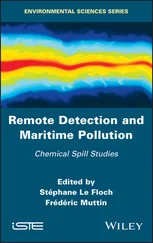Primitive man did not seriously harm the aquatic environment. He often lived beside rivers and lakes, and his waste products must have entered the water, but in insufficient quantities to have adverse effects on the flora and fauna. In fact excrement entering the water in this way no doubt contributed to its nutritive value, and the substances it contained entered into the normal cycles. In some of the less developed and less densely populated areas of tropical Africa we can see a similar situation to-day. The streams and ponds are full of healthy fish; the human beings have a rich internal fauna of parasite worms which pass part of their lives in the water, inside small crustaceans or fish. Man in this way contributes to the richness of wild life in his environment.
When man came to live in towns and cities, however, his increasing numbers had a very different effect. Sewage continued to be poured into the rivers, but the quantities were so great that most unpleasant results were obtained. By the middle of the nineteenth century the Thames, and many other major British rivers, had become open sewers. There are many accounts in the literature. I myself like the account of the Reverend Benjamin Armstrong, from his diary:
“July 10th, 1855. Took the children by boat from Vauxhall Bridge to show them the great buildings. Fortunately the Queen and Royal Princes drove by. The ride on the water was refreshing except for the stench. What a pity that this noble river should be made a common sewer.”
Practically every other river was treated similarly. Even the Cam flowing through the Backs at Cambridge was in this way abused, as is illustrated by the (perhaps apocryphal) story of Queen Victoria’s conversation with the Master of Trinity when she looked over the bridge. “What,” she asked, “are all those pieces of paper in the water?” The Master promptly replied, “Those, Your Majesty, are notices saying that bathing is forbidden.”
The results of all this untreated, or “raw,” sewage, vary greatly, depending on the volume of water and the amount of organic matter. As indicated above, small amounts of raw sewage may be actually beneficial to most forms of aquatic life. To-day in some rivers, including the Bedfordshire Ouse, the comparatively small number of boats present discharge the contents of their water closets straight into the water. This does not cause noticeable offence. In some parts of the Norfolk Broads it does, for there are many boats producing much more sewage and this is dangerous. In really crowded rivers, such as the Thames, such disposal methods are not allowed.
Sewage, in quantities which are large enough to have a biological effect, acts in different ways depending on the temperature, the nature of the water and various other factors. The most important biological effect arises from its breakdown by bacteria; this requires oxygen, and as a result the water tends to become deoxygenated, and so less suitable to support most other forms of life. Almost all pollution of water with organic matter, be it sewage, effluents from factories (particularly food factories and dairies) or sawdust and similar wood waste, has this sort of effect. Organic pollution is usually measured by the “biochemical oxygen demand test” (B.O.D.). Experience has confirmed the value of this test, in which a sample of contaminated water is incubated, in the dark, at 20°C. for five days in a closed container containing a known amount of oxygen in solution; the amount of oxygen taken up by the sample is a measure of its B.O.D. Where this is high, and where the diluting water is not present in large amounts, trouble is likely to occur.
It is not generally realised how little oxygen is present, dissolved, in any sample even of “pure” water. A litre of water, at 5°C., in free contact with the atmosphere, only contains about 9 cc. of oxygen, weighing 13 mgs. As the temperature rises the oxygen content falls, so that at 20°C. it is only about two-thirds the level at 5°C. As the rate of metabolism of cold-blooded animals may treble with such a rise in temperature, an oxygen shortage is easily produced. Air, even polluted air, is a much richer source of oxygen. A litre of air contains about 210 cc. of oxygen, weighing approximately 300 mgs., i.e. over twenty times as much as is found in the same volume of well-oxygenated water. This may help to explain why some chemicals are toxic in very low doses when dissolved in water; an aquatic animal to breathe must make intimate contact with an immensely large volume of water in order to obtain enough oxygen.
Oxygen reaches the water in two main ways. First, it dissolves at the surface from the atmosphere. Still water takes up oxygen slowly, turbulent water rushing over falls takes it up much more rapidly, for this often submerges bubbles which act as does bubbling air through a domestic aquarium. This type of solution will rarely raise the oxygen level above saturation. The second source of oxygen in water is from photosynthesis. Where there are many green plants present, during the hours of daylight the water may often become supersaturated with oxygen. Unfortunately after dark photosynthesis stops and the plants continue to respire and so actually reduce the amount of oxygen in solution. Therefore during a twenty-four-hour period some waters have a range of oxygen levels which varies enormously, from practically nil around dawn to a very high volume in the early afternoon. Many animals are adapted to life under these conditions. Some biologists have not realised that they exist, and have given too much importance to single measurements of oxygen level in samples of water, not realising that in a few hours far more or far less of the gas may be available.
The capacity of organic pollution to deoxygenate water is enormous. The sewage produced by a single human being gives rise to a daily oxygen demand of 115 gms. ( 1/ 4lb.). This represents the total amount of oxygen dissolved in 10,000 litres (over 2,000 gallons) if the water is saturated. In most rivers where sewage is discharged the water, before contamination, is usually far from saturation, so an even greater volume may be affected. Some industrial wastes have much greater effects. For instance it has been calculated that the oxygen demand created by the manufacture of a ton of strawboard corresponds to the sewage output of 1,690 persons, so it could deoxygenate some 17,000,000 litres (nearly 4,000,000 gallons) of oxygen-saturated water daily. These figures are somewhat academic, as they do not allow for the considerable amount of oxygen which dissolves into moving water from the atmosphere. Were it not for this important factor almost any river contaminated with any appreciable amount of organic matter would remain completely deoxygenated; deep lakes, with little water movement, become “purified” much more slowly, and severe pollution can have permanent effects.
There is little doubt that the Thames, formerly an excellent salmon river, reached a peak of pollution, and complete deoxygenation, during the nineteenth century. It was almost entirely due to untreated sewage produced by the human population that this disgusting condition was produced. This is not surprising. The flow of the river may be as low as 200,000,000 gallons a day. The water entering the London area is already depleted of oxygen, and as it is slow-moving only relatively small amounts of further oxygen go into solution. The sewage from a population of 100,000 people would, if the water were originally saturated and if no oxygen were added (and these two factors tend to cancel out), produce complete deoxygenation. It is no wonder that much of the sewage remained undecomposed for days, carried backwards and forwards through the city by the ebbing and flowing tide. Notwithstanding the increased population of to-day the situation, through improved methods of sewage treatment, is in fact considerably improved, at least from the aesthetic, and hygienic, point of view, but the water is still frequently completely or almost completely devoid of oxygen and the fauna and flora are of the kind resistant to such conditions. Pollution is now due not only to (treated) sewage effluent, but also to a great deal of industrial waste, which presents many problems mentioned below.
Читать дальше












